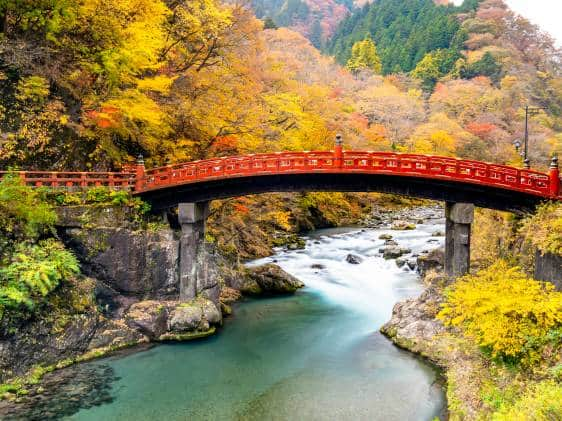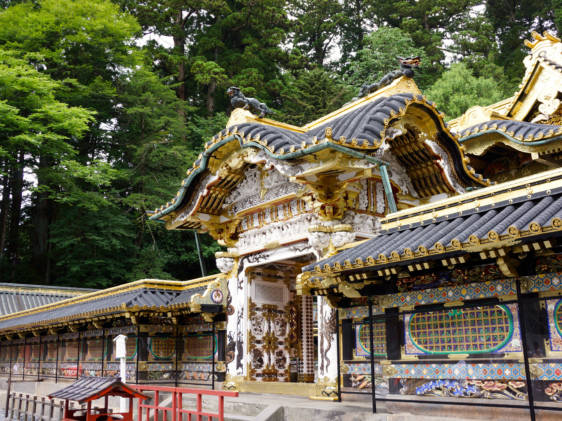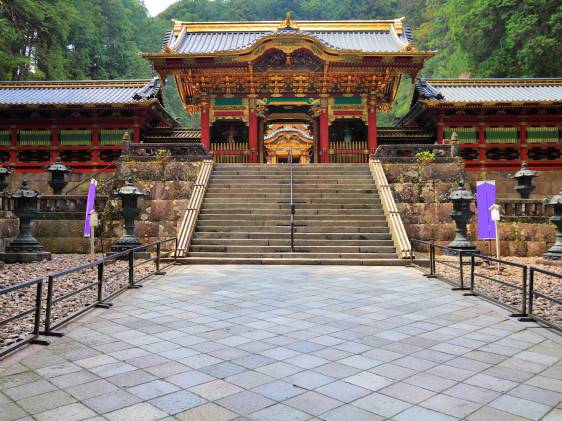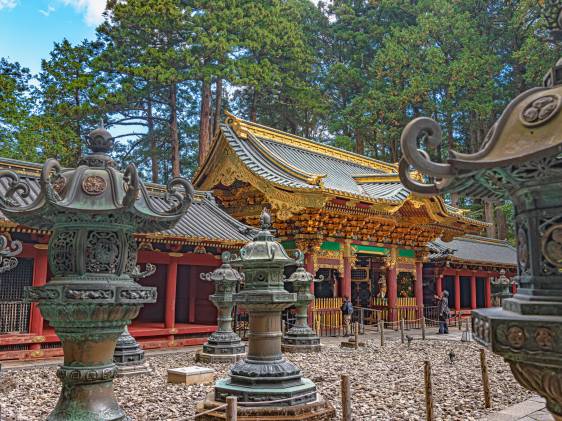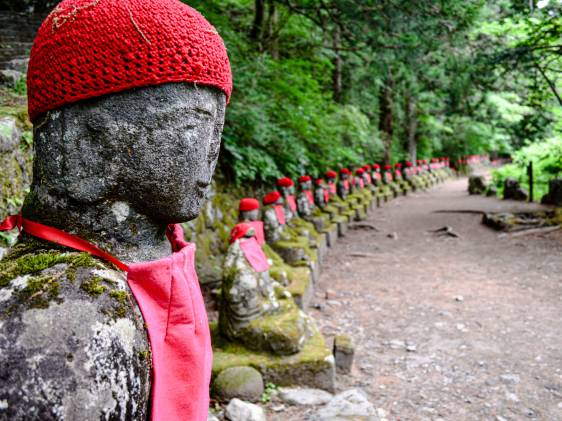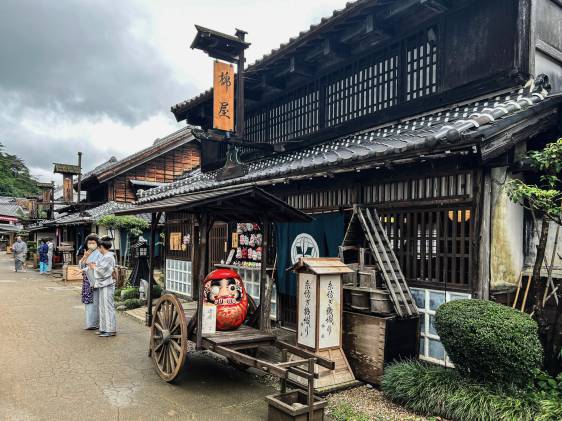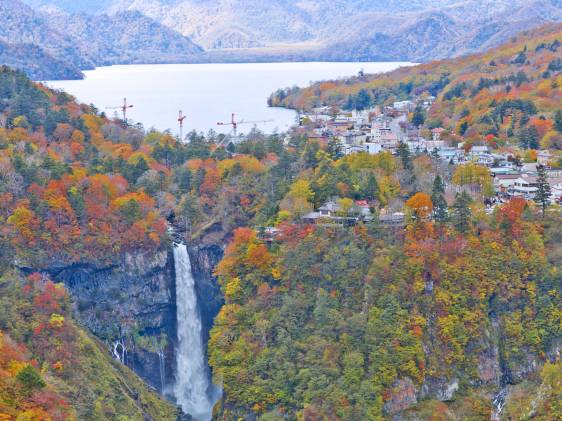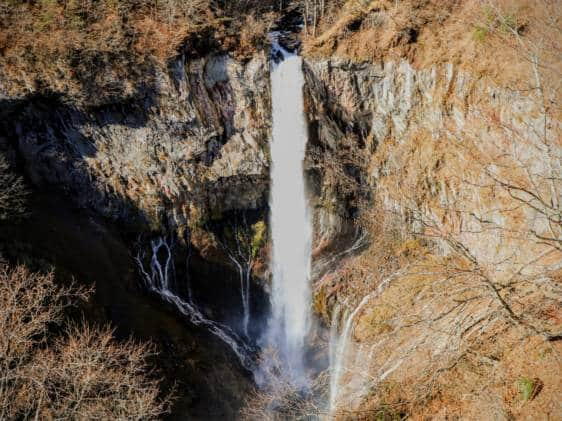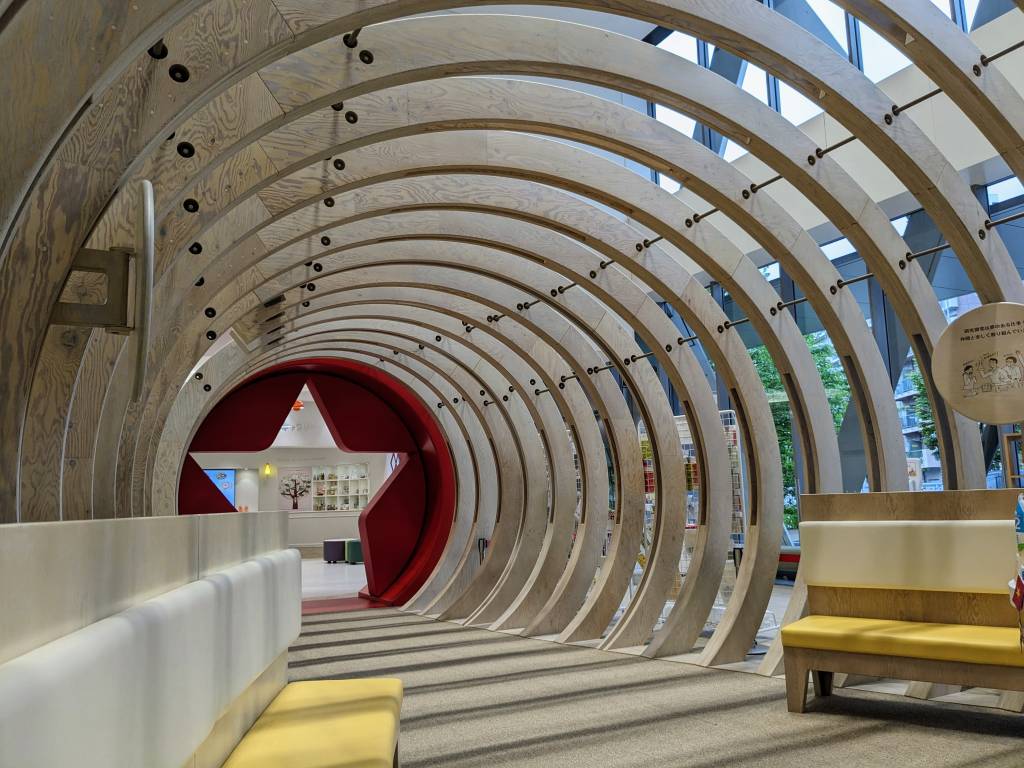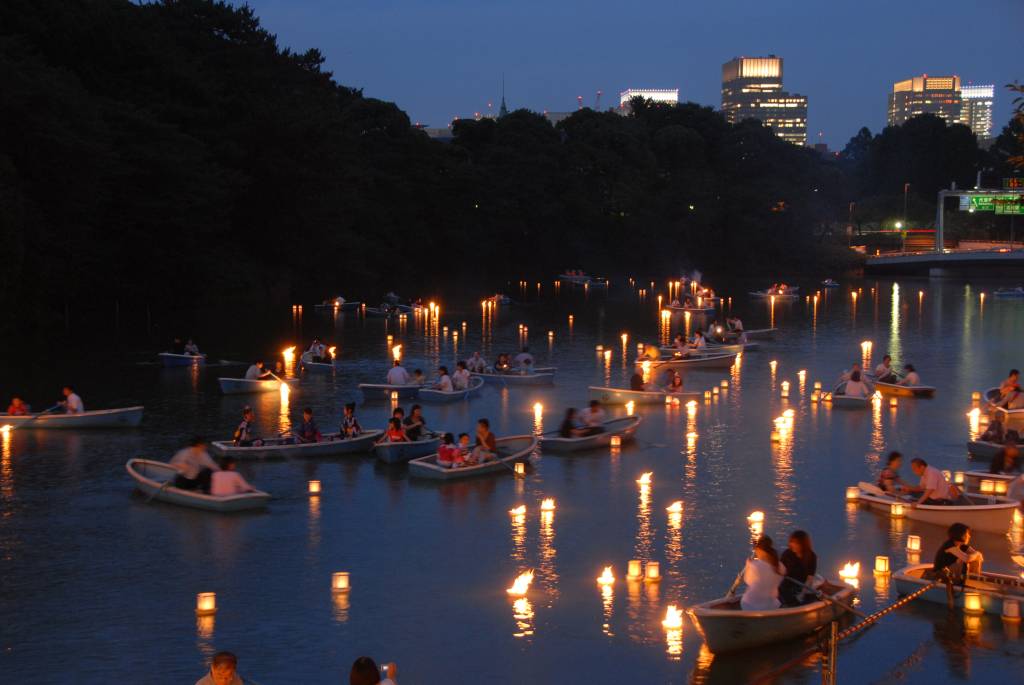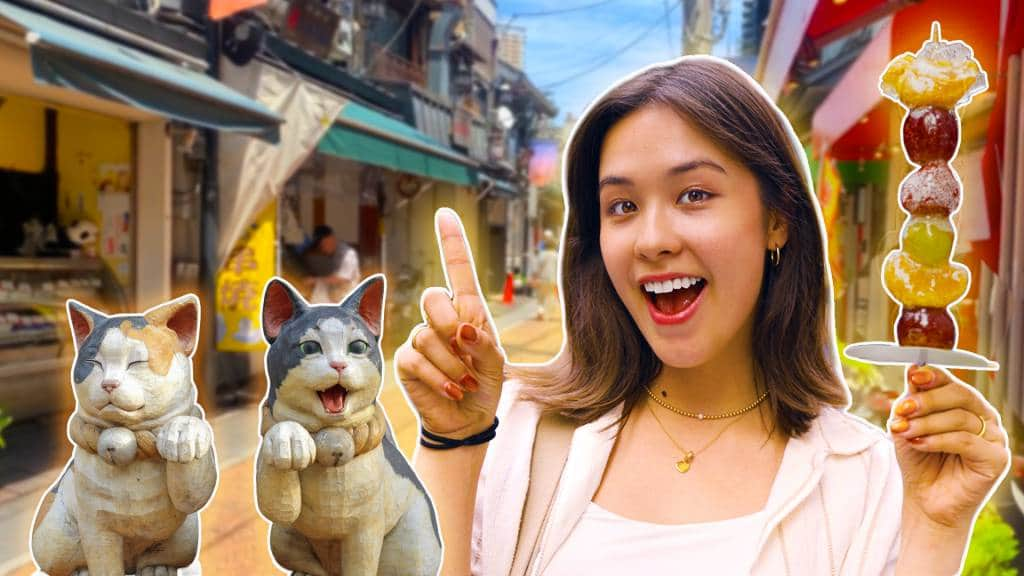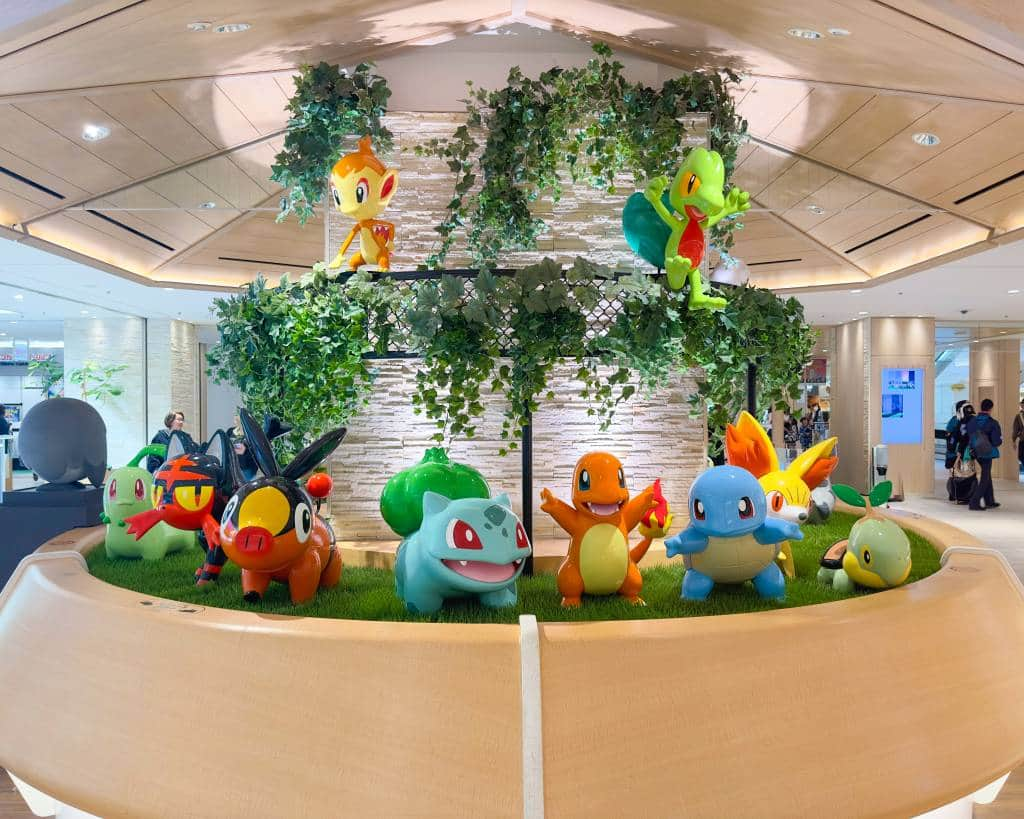Nikkō, in Tochigi Prefecture, is a destination favored among both international and local tourists. With its stunning mountain scenery and variegated foliage, it’s a choice location for admiring Japan’s distinct seasonal changes.
Nikkō is an unmissable travel destination and a convenient day trip from Tokyo. Soak your feet in an onsen overlooking a lake, or gaze upon centuries-old carvings at UNESCO World Heritage Sites.
Getting to Nikkō: Transportation and discount tickets
Probably the easiest, most comfortable, and most cost-effective way to travel to Nikkō is via the Tobu Railway from Asakusa Station. It takes around 1 hour and 50 minutes on a limited express train and costs from ¥3,050 one-way.
You can also purchase a two-day Nikkō Pass (known as the Nikkō World Heritage Area Pass) for ¥3,000. This covers the return basic fare (¥2,800 return) from Asakusa to Tōbu-Nikkō Station, but you’ll have to pay extra for a seat on the limited express trains (from around ¥1,650 to ¥1,940). It is worth it if you are also planning on using buses in the area and the trains to Kinugawa Onsen.
See all of the options in our dedicated guide to transport from Tokyo to Nikkō.
Tours from Tokyo to Nikkō
It’s hard to see everything in Nikkō in just one day, so a guided tour is recommended if you want to explore further than the shrines and temples in Central Nikkō. This top-rated bus tour includes a visit to Tōshōgū Shrine, Lake Chūzenji, and Kegon Falls.
If you’re in a group, this private van tour with an English-speaking driver is perfect. You get to hit up all the famous spots but in the privacy and comfort of a private vehicle. A group of up to four people costs around ¥64,000 all in.
Central Nikkō: Getting there and things to do
Due to the high concentration of natural and historical landmarks in the same area, it’s possible to see a great deal of Nikkō over two or three days. However, if you are just on a day trip, it may be worth focusing on the shops, shrines, and temples in Central Nikkō.
Pro tip: A different way to enjoy Nikkō is with a yabusame (mounted archery) experience and private prayer tour at Tōshōgū Shrine.
Getting to and around Central Nikkō
Most of Central Nikkō can be accessed either on foot (20 to 30 minutes from Tōbu-Nikkō Station) or by the World Heritage Loop Bus (also from the station). The two-day Nikkō Pass (Nikkō World Heritage Area Pass) covers this bus route and also includes train access up to Kinugawa Onsen and beyond.
Things to see and do in Central Nikkō
With 103 buildings and structures, it’s easy to lose track of time and place in the UNESCO World Heritage Shrines and Temples of Central Nikkō. Here, we highlight some of the most popular and not-to-be-missed landmarks.
Shinkyō Bridge
5-minute bus or 23-minute walk from Tōbu-Nikkō StationFree; ¥300 to cross the bridge

This red, vermilion wooden icon is seen as the entrance to Nikkō and is one of the most recognizable bridges in Japan. Shinkyō Bridge crosses the Daiya River and has a beautiful mountainous backdrop that changes color throughout the seasons.
Originally built at the end of the Nara period, the bridge was rebuilt in 1987 and was designated a UNESCO World Heritage Site in 2011.
If you’re lucky, you’ll be able to spot a bride and groom’s first crossing after their marriage in the affiliated Nikkō Futarasan Shrine. The end of the bridge once started the approach to Tōshōgu Shrine. Note that if you pay the ¥300 to cross, you’ll still have to come back the way you came.
Tōshōgū Shrine
10-minute bus or 36-minute walk from Tōbu-Nikkō Station¥1,600

Tōshōgū Shrine, built in 1617, is the mausoleum of the founder of the Tokugawa Shogunate, Tokugawa Ieyasu. Featuring elements of Buddhist and Shinto architecture, Tōshōgū Shrine is renowned for its highly ornate façade.
Well-known features of Tōshōgū Shrine include the wooden inlay of the three wise monkeys (“see no evil, hear no evil, speak no evil”) and nemuri-neko, a sleeping cat located near the karamon gate. Also spot the elephants motif, which was crafted by an artist who had never seen elephants before — see if you can tell their tails from their trunks.
Children: ¥550
Rinnōji Temple
10-minute bus or 30-minute walk from Tōbu-Nikkō Station¥400 for Sanbutsudo Hall only; ¥1,000 for Sanbutsudo Hall, Taiyūin, Treasure Hall, and Shōyō-en Garden

Near Tōshōgū Shrine is Rinnōji, a Buddhist temple built in the 8th century and founded by the monk Shōdō Shōnin. In the main Sanbutsudo Hall, you’ll find three 8-meter-tall golden Buddhas related to Mount Nantai, Mount Nyoho, and Mount Taro. The treasure house just opposite also holds precious artworks and statues. Next to Sanbutsudo Hall is the classical garden, Shōyō-en, a pleasant space in which to relax and enjoy the seasonal imagery of Nikkō.
Taiyūin Temple and Mausoleum
15-minute bus or 40-minute walk from Tōbu-Nikkō Station¥550 for Taiyūin; ¥900 for Sanbutsudo Hall (Rinnōji) and Taiyūin
Taiyūin Temple is the companion piece to Tōshōgū Shrine, being the mausoleum of Ieyasu’s grandson, Iemitsu. Although less grand than Tōshōgū, Taiyūin still deserves attention, not least for its white dragon statue near the Karamon Gate and the Nio statues at the Niomon Gate.
Kanmangafuchi Abyss
5-minute bus and 10-minute walk or 40- to 45-minute walk from Tōbu-Nikkō StationFree

Kanmangafuchi Abyss is a pleasant walking trail through a valley with a babbling river. Known for its red-hatted jizo statues (monk protectors of women, children, and travelers), the trail is said to have a mystery; each time you count the statues, the number changes. Adding to the mysticism is a Sanskrit character carved into stone that is said to be engraved by the founder of Shingon Buddhism, Kōbō Daishi.
Kinugawa Onsen: Getting there and things to do
Kinugawa Onsen is a hot spring town just to the east of Central Nikkō. It’s not too far from the shrines and temples, so it can be added on if you want to utilize the Nikko Pass.
Getting to and around Kinugawa Onsen
As with Tobu-Nikko, Kinugawa Onsen Station has direct access using the Tobu Railway from Asakusa Station. The area from Shimo-Imaichi Station to Kinugawa Onsen and even farther to Shin-Fujiwara has all-you-can-ride coverage on both Nikkō passes. It also includes one return trip from Asakusa.
Things to see and do around Kinugawa Onsen
You can always tag these two adventures on a day trip to Central Nikkō.
Edo Wonderland Nikkō Edomura
15-minute bus from Kinugawa Onsen Station or free 30-minute shuttle from Nikkō Station¥5,800 one-day pass; ¥5,000 for afternoon pass; get discounted tickets here
Edo Wonderland Nikkō Edomura is your opportunity to walk in the footsteps of those who lived in the Edo period (1615-1868). The family-oriented theme park is filled with folks in traditional costumes — guests and actors. But if you don’t want to dress up, then there are also experience zones, shopping, and archery challenges.
Children: ¥3,000
Seniors: ¥4,700
Tobu World Square
5-minute bus from Kinugawa Onsen Station or 1-minute walk from Tobu World Square Station¥2,800; get tickets here
Love the small things? Interested in the minuscule? Then you may want to visit Tobu World Square. Inside the theme park are more than 100 famous buildings from 22 countries, but how can they all fit inside? They’re at 1/25th the scale of the originals. The park is easy to get to — it has its own train station — so it’s an easy add-on if you’re looking for things to do in the area.
Nikkō National Park: Getting there and things to do
To enter the heart of Nikkō National Park, one of Japan’s most beautiful national parks, you’ll need to go a bit farther than Central Nikkō and may require more than a day. The 2-day Nikkō Pass does not cover travel in this area — but the 4-day Nikkō All Area Pass does.
How to get around Nikkō National Park (Lake Chūzenji and beyond)
You can hop on a bus bound for Lake Chūzenji at either JR Tōbu or Tōbu-Nikkō stations. The 45-minute drive on the sinuous Irohazaka Winding Road will lead you past Shinkyō Bridge and smaller waterfalls such as Urami Falls and Jakko Falls. Chūzenji Onsen, the town next to the lake and at the foot of Mount Nantai, is a good resting spot if you plan to spend the night and can be a hub for other attractions in the area.
Things to do around Nikkō National Park
It may take a bit more planning to see all the sights of Nikkō National Park, especially if you are relying on timetables and public transport. You might consider renting a car, if this area is the main focus of your Nikkō trip.
Akechidaira Ropeway Observation Deck
35-minute bus from Tōbu-Nikkō Station¥1,000 round trip on ropeway

On your way to Lake Chūzenji, you’ll pass the start of the Akechidaira Ropeway. Get off and jump on a 3-minute ropeway to the observation deck for perhaps the most iconic landscape shot of Nikkō. If you go in autumn, you’re bound to be queuing for a while, but it’ll be well worth it. It closes early at around 3:30 p.m. and they sometimes suspend it due to weather or safety checks, so make sure to check the website before you go.
Kegon Falls
45-minute bus from Tōbu-Nikkō StationFree for ground-floor deck; ¥600 for lower deck

Hop off the bus at Kegon Falls, which at 97 metres is one of the three largest waterfalls in Japan. You can view it for free from above (on a ground-level platform), but for the best view, you’ll have to go below the rock. This lower deck costs ¥600 but treats the viewer to plummeting plumes that you can’t see anywhere else.
Tip: Although not as impressive as Kegon Falls, Yudaki Falls is still worth a visit. Get up close and personal at the bottom of Yudaki Falls while cracking open a cold one made available to you via the adjacent convenience store.
Lake Chūzenji
53-minute bus from Tōbu-Nikkō StationFree; ¥1,680 for a 55-minute cruise

Lake Chūzenji is the highest lake in Japan, with many activities to do on the water or along the lakeside. You can take a pleasant walk or hike around it, hire a swan paddleboat, or opt for a cruise. The lakeside has a lot of cute cafés and souvenir shops, as well as the British and Italian embassies’ memorial parks.
Ryuzu Falls
1-hour bus from Tōbu-Nikkō Station; or 10-minute bus from Lake ChūzenjiFree

While not as imposing as Kegon Falls, the Ryuzu Falls are a peaceful jaunt into nature that highlights some of the best leaves of Nikko’s fall season. The café Ryuzu no Chaya is a great resting spot, with seats that look out onto the crashing waters below.
Senjōgahara Marshland
1-hour-5-minute bus from Tōbu-Nikkō Station; or 15-minute bus from Lake ChūzenjiFree

If you are heading to Ryuzu Falls, you might as well keep going to Senjōgahara. It’s known for its crisp, autumn landscapes, and you have two choices to see the best vistas. You can either take the bus to the Senjogahara Marshland Observation Deck on the main road or stretch your legs and go for a hike. There are several trails to choose from (incl. one near Ryuzu Falls) that wind through the marshes, one in particular only takes around an hour, and all are well-kept and flat.
What to eat in Nikkō

In Nikkō, the most famous thing to fill your belly with is yuba, otherwise known as tofu skin. Yuba has been a delicacy in the area for centuries — most likely due to the nearby monks who only chowed down on veggies. And you may be thinking there’s not much they can do with tofu skin, but you’d be wrong. Many yuba restaurants in Nikko serve the dish raw, steamed, baked, and fried on a tasting platter for somewhere between ¥1,000 and ¥2,000. We recommend the restaurant Shiori for its welcoming atmosphere and explanations in English.
A sweet treat to try is the Yubamanju sold outside Tōbu-Nikkō Station. It is filled to the brim with red bean paste and sprinkled with salt. At only around ¥250 you can’t go wrong.
Where to stay: Accommodation in Nikkō
Nikkō runs the gamut of accommodation options, from deluxe, five-star hotels with private onsen to modest, yet nonetheless decent budget accommodation. You can either stay in Central Nikkō or nearer Lake Chūzenji, depending on what attractions you have planned.
Hotels near Central Nikkō
Affordability granted, several hostels impress due to their friendly service, location, and amenities. Try Nikkō Guesthouse Sumica near the station for dormitory beds around the ¥4,500 mark or Nikko Park Lodge Tobu Station for even cheaper options. For hotels, try Nikko Station Hotel Classic (mid-range) or Nikko Hoshino Yado for something fancier.
Hotels near Lake Chūzenji and Nikkō National Park
For rest and relaxation closer to nature, head to inns near the lake like Hatago Nagomi, complete with balcony and public onsen (tried and tested), or something a little simpler such as Little Forest Inn Nikko.
Festivals in Nikkō
Because Nikkō is filled with history, shrines, and temples, there are many annual events and festivals that take place throughout the year. Don’t miss:
- Nikkō Tōshōgū Shrine Spring Grand Festival (May 17–18 each year): See 1000 men dressed as Edo-era warriors.
- Nikkō Tōshogū Shrine Autumn Grand Festival (Oct. 16–17 each year): The autumn version of the above.
- Kinugawa Onsen Dragon King Festival (July): Watch as portable shrines are jostled about the streets of this otherwise peaceful town.
See more from the region on our Japan Cheapo events page.
Nikkō FAQs
What is Nikkō famous for?
Nikkō is most famous for its Buddhist and Shinto shrines and temples, which are designated a UNESCO World Heritage Site. But it is also known for its abundance of nature, autumn colors, and black bears.
Can Nikkō be a day trip from Tokyo?
Yes, Nikkō can be done as a day trip from Tokyo. We recommend spending the day in Central Nikkō, as this has easy access to the main station and attractions on foot or a quick bus ride.
When is the best time to visit Nikkō?
Visitors tend to flock to Nikkō during two periods of the year — first, in April for hanami (cherry-blossom viewing) and second, around November for the beautiful autumn leaves, kōyō.
Which is better: Nikkō or Hakone?
Both Nikkō and Hakone are known for their mountains, onsen, and lakes. And while Hakone has a steaming volcanic valley and sightings of Mount Fuji, Nikkō has a labyrinth of historical shrines and temples, as well as a spectacular waterfall.
While we do our best to ensure that everything is correct, information is subject to change. Originally published in June 2015. Last updated in July 2025.


